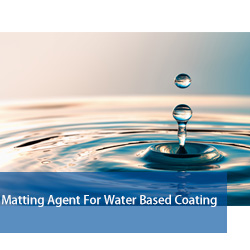According to relevant sources of the Japanese government, Japan has initially decided to use special cases to allow the United States to provide nuclear technology to India that has not yet joined the NPT in accordance with the US-India nuclear energy agreement. Japan will not raise objections at the NSG temporary meeting held in Vienna in late August.
Japan’s decision to make such a decision was partly due to the desire to strengthen Japan-India relations and push the Japanese nuclear industry into the Indian market. However, people criticized that the above approach was contrary to the consistent position of Japan to support the abolition of nuclear weapons. Therefore, it is bound to be strongly opposed by the groups of the victims of the Hiroshima and Nagasaki insurgency.
After the US-India nuclear energy agreement entered into force, the United States can export nuclear power technology and uranium fuel to India. Because the NSG guidelines prohibit nuclear cooperation with non-NPT affiliates, it must be modified. As the only country that had been bombed by atomic bombs, Japan has always been cautious about the revision of the NSG guidelines. This time, it mainly considers that the agreement between the International Atomic Energy Agency (IAEA) and India guarantees verification and that nuclear power is conducive to alleviating global change. Warm only made this decision.
However, the amendments must be approved by the General Assembly at the unanimous vote, and countries such as Switzerland are expected to raise objections by then. Some people have accused them of saying that opening only one side of the Indian network will lead to a weakening of the NPT system. Therefore, the Japanese government is also considering writing a sanctions measure to prevent India from conducting a nuclear test again.
When the US Assistant Secretary of State for South Asia Affairs, Boucher, visited Japan in early August, he asked the Japanese to agree to take special measures against India.
The US-India nuclear energy agreement was signed in 2007. It is reported that India’s nuclear development investment in the next 20 years may reach 100 billion US dollars.
Japan’s decision to make such a decision was partly due to the desire to strengthen Japan-India relations and push the Japanese nuclear industry into the Indian market. However, people criticized that the above approach was contrary to the consistent position of Japan to support the abolition of nuclear weapons. Therefore, it is bound to be strongly opposed by the groups of the victims of the Hiroshima and Nagasaki insurgency.
After the US-India nuclear energy agreement entered into force, the United States can export nuclear power technology and uranium fuel to India. Because the NSG guidelines prohibit nuclear cooperation with non-NPT affiliates, it must be modified. As the only country that had been bombed by atomic bombs, Japan has always been cautious about the revision of the NSG guidelines. This time, it mainly considers that the agreement between the International Atomic Energy Agency (IAEA) and India guarantees verification and that nuclear power is conducive to alleviating global change. Warm only made this decision.
However, the amendments must be approved by the General Assembly at the unanimous vote, and countries such as Switzerland are expected to raise objections by then. Some people have accused them of saying that opening only one side of the Indian network will lead to a weakening of the NPT system. Therefore, the Japanese government is also considering writing a sanctions measure to prevent India from conducting a nuclear test again.
When the US Assistant Secretary of State for South Asia Affairs, Boucher, visited Japan in early August, he asked the Japanese to agree to take special measures against India.
The US-India nuclear energy agreement was signed in 2007. It is reported that India’s nuclear development investment in the next 20 years may reach 100 billion US dollars.
Matting Agent For Water Based Coatings
Water-based coatings are considered [green" or environmentally friendly as the VOC content is generally very low or negligible in quantity. Waterbased coatings can be applied over almost all ink types utilizing flexo/anilox, gravure, ink-train and roller coaters or variations of these. Waterborne products have also used in the industrial finishing of wood, plastic and metal substrates.
Silica Matting Agent specialized used for Matte/Semi-gloss waterbased Coatings. It provided high matting efficiency, excellent coating appearance and high transparency. As well as low oil absorption, easy dispersion and smoothly touch with minimal impact of viscosity. Generally, the untreated products provide highly effective matting at minimal addition levels, thus enabling the formulation of clear, low-gloss finishes with high transparency and chemical resistance properties.

Water Based Paint Agent Silica 7631-86-9,Silicon Dioxide Powder In Water Based Primer,Water Based Coating Agent 7631-86-9
Guangzhou Quanxu Technology Co Ltd , https://www.skyelecteflonheater.com